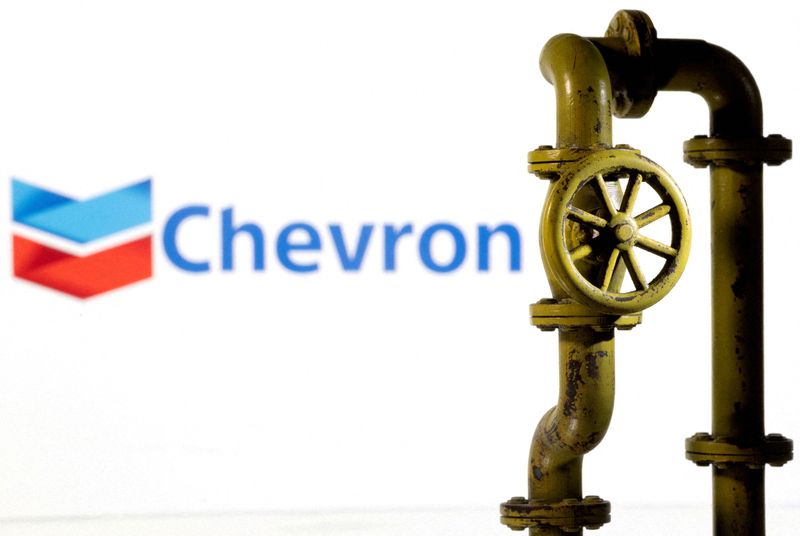Chevron in talks on 15-year LNG supply contracts into Europe
2023.11.02 07:43

© Reuters. FILE PHOTO: A 3D printed natural gas pipeline is placed in front of displayed Chevron logo in this illustration taken Feb. 8, 2022. REUTERS/Dado Ruvic/Illustration/File Photo
By Ron Bousso
LONDON (Reuters) – Chevron (NYSE:) is negotiating contracts to supply liquefied (LNG) into Europe for up to 15 years as buyers expect the region to rely on imports for longer than previously thought, an executive at the U.S. oil and gas company said.
The new willingness by buyers to agree on long-term supply deals comes after several European governments rolled back some green policies citing higher costs and economic concerns.
European imports of the super-chilled fuel surged after Russia halted pipeline gas exports in the wake of Moscow’s invasion of Ukraine last year.
Buyers initially sought short-term LNG supply of up to 5 years due to the uncertainty in the market and countries’ ambitions to reduce their reliance on fossil fuels.
But that has changed as the focus on securing energy supplies grew, Colin Parfitt, head of Chevron’s trading, shipping and pipeline operations, told Reuters on Wednesday.
“There’s been an evolution over the past 18 months from short-term and spot supply deals to longer term commitment,” Parfitt said.
“After Russia-Ukraine, the initial thoughts we were getting out of Europe were ‘we only want LNG for a short period of time because of the energy transition’. What I’ve seen happening in the last year is that lengths of contracts customers are willing to sign have been extended,” Parfitt said.
“European customers want medium-term deals in the up to 15 years space and we’re working on some commercial deals.”
Last month, Shell (LON:) and TotalEnergies (EPA:) agreed on two separate 27-year LNG supply deals into Europe with Qatar, one of the world’s top producers.
Chevron will supply most of the LNG from the United States, which has become a major LNG exporter following the shale boom in recent years.
U.S. LNG exports hit their second highest level on record in October, with Europe remaining the principal buyer.
In the short term, Parfitt said the European market looked well supplied ahead of winter.
“In the short term European gas looks well supplied, softer than last year but with risk of volatility if you get a cold winter in Europe, cold winter in Asia, risks to supply as well as geopolitics.”








